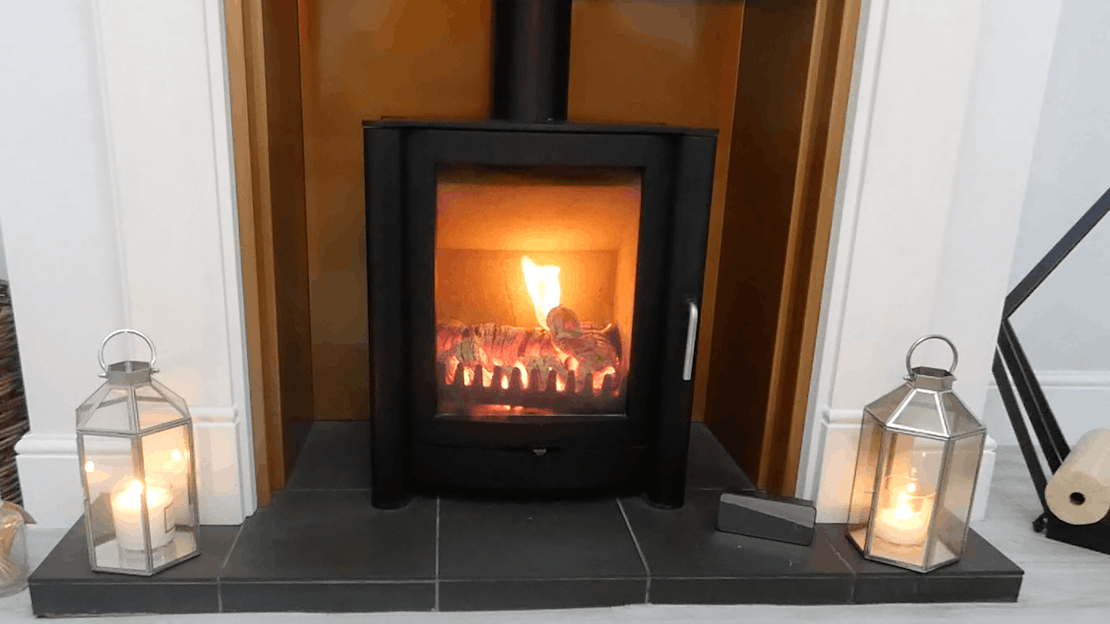
Why you should try heat logs/ wood briquettes
What are Briquettes?
Briquettes are a by-product from many industries, the majority are made from sawdust, chippings, shavings and bark, which means they recycle wood waste that would have gone to landfill if it wasn't used. This means they aren’t being made from trees specifically felled to make fuel like logs are.
The materials used to make them may vary as there are multiple types of briquettes available on the market everywhere.
Tiger Heat Logs
Our Tiger Heat Logs are made up of compressed sawdust. The sawdust is a natural by-product of sawmills that would usually go to waste. Therefore these briquettes, along with many others, help to reduce the amount of waste coming out of sawmills.
Due to them being made from highly flammable sawdust, they tend to last on average an hour and a half at full burn. They are extremely dry as the wood they come off is kiln dried with a very low moisture content, this helps them to burn well, produce a lot of heat and they are environmentally friendly.
They provide a clean burn with a nice attractive flame. They are quick to catch light and don’t need much to get them going, a little bit of kindling and a firelighter should do the trick. We recommend breaking them in half before placing them on the fireplace as they expand in size when they are burning.
Birch Blocks
These briquette blocks are made from finely ground sawdust and shavings that have been placed under intense pressure to form them in the shape of a brick. They are produced using sawdust that was naturally a waste product from saw mills so help to clear up the waste from the mills. This is why they are considered an environmentally friendly fuel.
They have a moisture content of less than 9% meaning they are very dry, this helps to light them easily and for them to give off a good burn. They boast an attractive flame and on average you can expect a burn of approximately 2 and a half hours. Due to the dryness they do not produce much smoke at all.
For the best results we recommend using 2-3 briquettes at a time but be cautious that they expand when they are burning so keep some space available for them to expand into.
Pini Kay Heat Logs
These briquettes are made from pure sawdust with a moisture content of less than 10%, they undergo a compression of high intensity to form them into shape. Unlike other heat logs,Pini Kays don’t tend to expand as much as other heat logs.
When burning, they will give off a nice flame to begin with but once they have burnt through they will begin to smoulder and glow, whilst still kicking out a high level of heat. They are very dense in terms of briquettes and tend to burn for around 2 -3 hours.
For the best results, add 2 or 3 to your fireplace with a good base of kindling, once they have burnt through and begin to break down, add more to the top to keep the fire going.
Superheat Birch Briquettes
These briquettes are made out of a combination of Birch sawdust, shavings, chips and bark which is then compressed with high levels of pressure into the brick shape you can see in the pack.
This means the product is 100% renewable energy and is produced as a byproduct from sawmills. The wood which the product comes from is sourced from sustainably managed forests. They have a great burn time of approximately 2 hours, with an attractive flame and high heat output.
They are great value for money as they tend to burn for longer than firewood so make a great alternative. They are also carbon neutral and produce a low smoke output.
Glow Heat Logs
A new type of heat log briquettes to our range, but certainly not one to be overlooked. They are produced from birch sawdust, shavings, chips and bark that has been ground then subject to high amounts of pressure to form the log shape.
They are 100% renewable, carbon neutral, produced as a wood byproduct from sustainably managed forests and barely produce any smoke at all. They have a nice clean burn that lasts around 2 - 3 hours, in which they kick out very high levels of heat.
We recommend breaking these heat logs up before placing them on the fire as they do expand whilst burning so need ample amount of space to burn, this also allows enough air flow to circulate around them to keep them burning nice and hot.
Due to their qualities they are very popular for use as an alternative to burning firewood.
